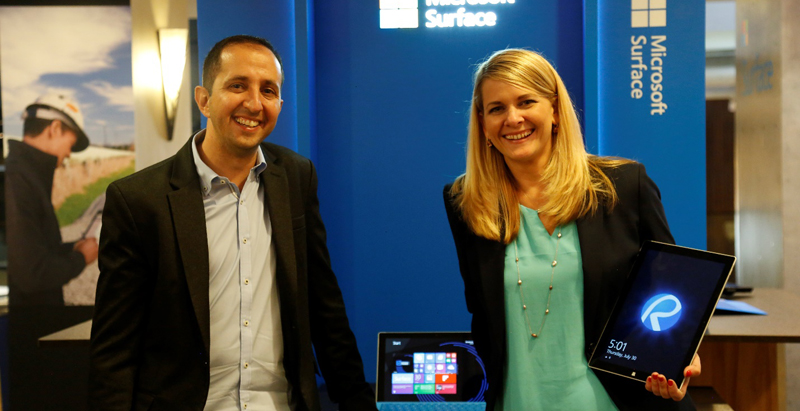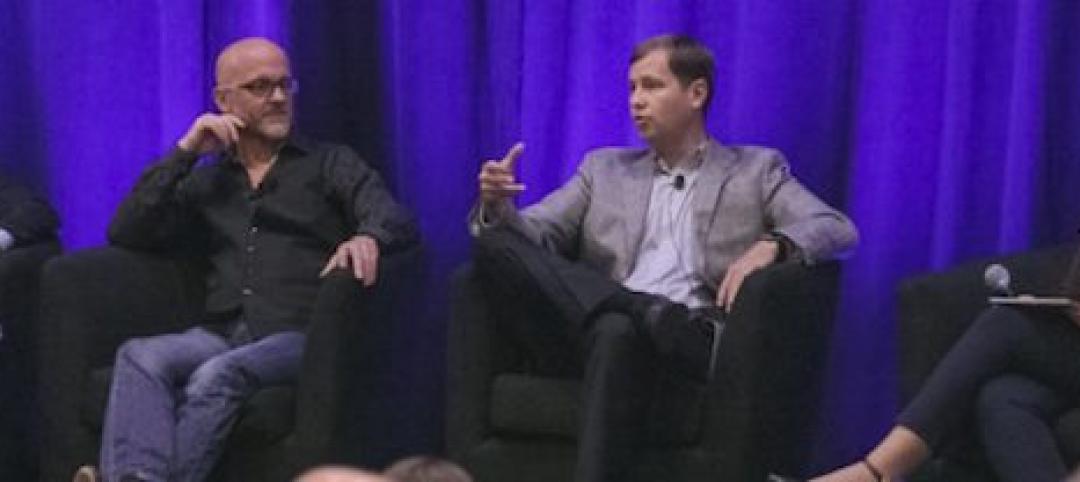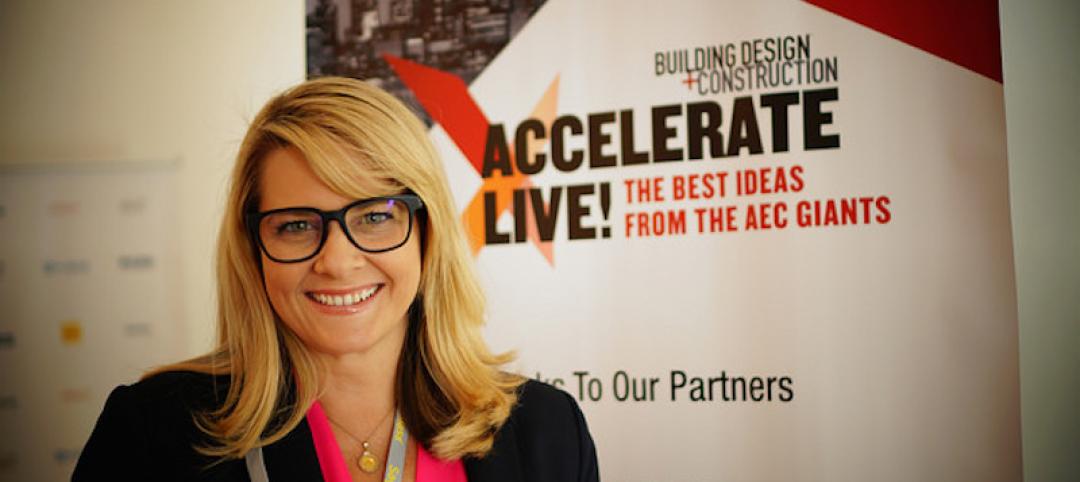Does the Surface Pro 3 really meet the needs of the AEC industry? I caught up with Pete Kyriacou, Microsoft’s Senior Director of Programs, at the Bluebeam eXtreme Conference in Los Angeles to talk about the tablet and whether it really measures up in meeting the mobility needs of the industry. Kyriacou is a former AEC professional who is in charge of working with Microsoft’s engineers to take products from prototype to mass production. He and the Microsoft Surface team were at the conference to announce a joint effort between Microsoft and Bluebeam to improve mobility workflows for designers and builders from the office to the field. See the full interview here.
In the keynote address, Kyriacou talked through the design of the Surface Pro 3, explaining the natural fit for Microsoft and Bluebeam as technology integrators. Working closely with Microsoft, Bluebeam was able to take advantage of the power of the Surface Pro 3 device to create a more intuitive end-user experience with Revu. When I sat down with Kyriacou, I asked him to expound on this integration to better understand the fit for the AEC industry.
“We’re super excited about people using our devices to be more productive,” he said. Noting the specific challenges facing technical professionals, he continued, “We got really excited because of the precision that’s needed for a lot of the drawings and document control—the processing power that’s required for a lot of the modeling, as well as the drawings, and the requirement on mobility, being able to be in the field with all that power—all that processing really fit well with the Surface device.”
If Kyriacou seems passionate about the usability of the Surface Pro 3 for the AEC industry, it’s because he has firsthand experience with the workflows. Back before he was designing consumer products, he was a Program Manager for a few large building projects in the Los Angeles area. Converting warehouses into Charter schools for GreenDot, Kyriacou says he gained a true appreciation for what AEC professionals go through to get a project off the ground. Relating this experience of designing hardware within oftentimes impossible parameters, Microsoft pushed their engineers to do the impossible and take risks.
How did Microsoft come to connect with Bluebeam? An architectural customer in Manhattan told them they used Revu and loved it. This increased the team’s interest, and the two companies began talking. Kyriacou recalled how early on in the discussions, an internal catch phrase was uncovered– “getting stuff done”—that turned into the unofficial mantra shared by both companies.
The newly optimized Revu on the Surface Pro 3 shines when marking up a drawing. According to Kyriacou, “The Pen on the Pro 3 is really unique. It’s an active stylus. That means you get high precision. It’s not an extension of a finger: it truly is an inking device. Bluebeam’s done a great job of doing auto-detect; it disambiguates between ink and fingers. So, fingers can be used for pinch and zoom, navigating a screen while the Pen’s used for actually taking notes, writing on the screen.”
Having spent a lot of time talking with industry professionals about their mobility needs, I was curious to hear from my peers just how the Surface Pro 3 measured up. I wasn’t surprised to hear overwhelmingly positive feedback, with many saying that it’s even replacing their laptop. The benefit of having only one operating system to support in the office and in the field outweighs the lack of LTE 4G support, with most teams working around that by leveraging hot spots or applications with online-offline capabilities. The portability and the power of the Surface are a winning combination for both end user and IT.
Speaking to Kyriacou, it was interesting to hear how his engineers faced challenges similar to AEC project teams. With growing constraints, he pushed them to take risks, to push the bounds of what is possible. It appears this risk has paid off, as the Surface Pro 3 just might be the mobile solution AEC professionals have been waiting for.
More from Author
Sasha Reed | Dec 15, 2017
Future vs. current state of construction innovation: How will we make the leap?
Looking beyond today’s constraints to the possibility of what “could be” is a key characteristic of those defining and delivering innovation to design and building firms across the globe.
Sasha Reed | Sep 19, 2017
BIM vs VDC…how the US and the UK differ in approaching digital project delivery
In this four-part series, Bluebeam VP Sasha Reed sat down with industry experts to examine the need for defining and understanding digital workflows and data management throughout the design and construction project lifecycle.
Sasha Reed | Jul 19, 2017
Introducing StrXur by Bluebeam
Our goal is to present unique perspectives you may not be able to find anywhere else.
Sasha Reed | Jul 13, 2017
Defining the future by mastering the art of change
From my perspective, what separates organizations thriving in the digital revolution from those who are not boils down to one thing: leadership.
Sasha Reed | Mar 15, 2017
Incentivizing change: Show me the money
Who is succeeding, and on what terms? And what will it take for everyone to experience the benefits of that success?
Sasha Reed | Oct 4, 2016
The talent shortage: Will the training the AEC industry desperately needs arrive in time?
As the construction industry bounces back from the Great Recession, an entirely new class of tech-savvy construction professionals has been created, and the supply of these highly skilled, tech-proficient pros has been quickly exhausted.
Sasha Reed | Jul 11, 2016
Construction Disruption at AECX: Technology, hackathons and the promise of change in LA
The lead up to AECX featured a discussion providing insight into the current state of the AEC technological revolution by exploring opportunities, challenges and choices AEC pros face.
Sasha Reed | Jun 23, 2016
Implementing Change: The Five Biggest Mistakes to Avoid
Two truths from the jobsite: 1) The best part about uncovering a problem is discovering its solution, and 2) The worst part about discovering the solution is implementing it.
Sasha Reed | Jun 9, 2016
With all these sharks in the water… (No Predictions Here...Part 2)
Rather than fighting to control the proliferation of apps, perhaps we should be training our eyes to look for signs of long-term viability among all the fins in the water
















